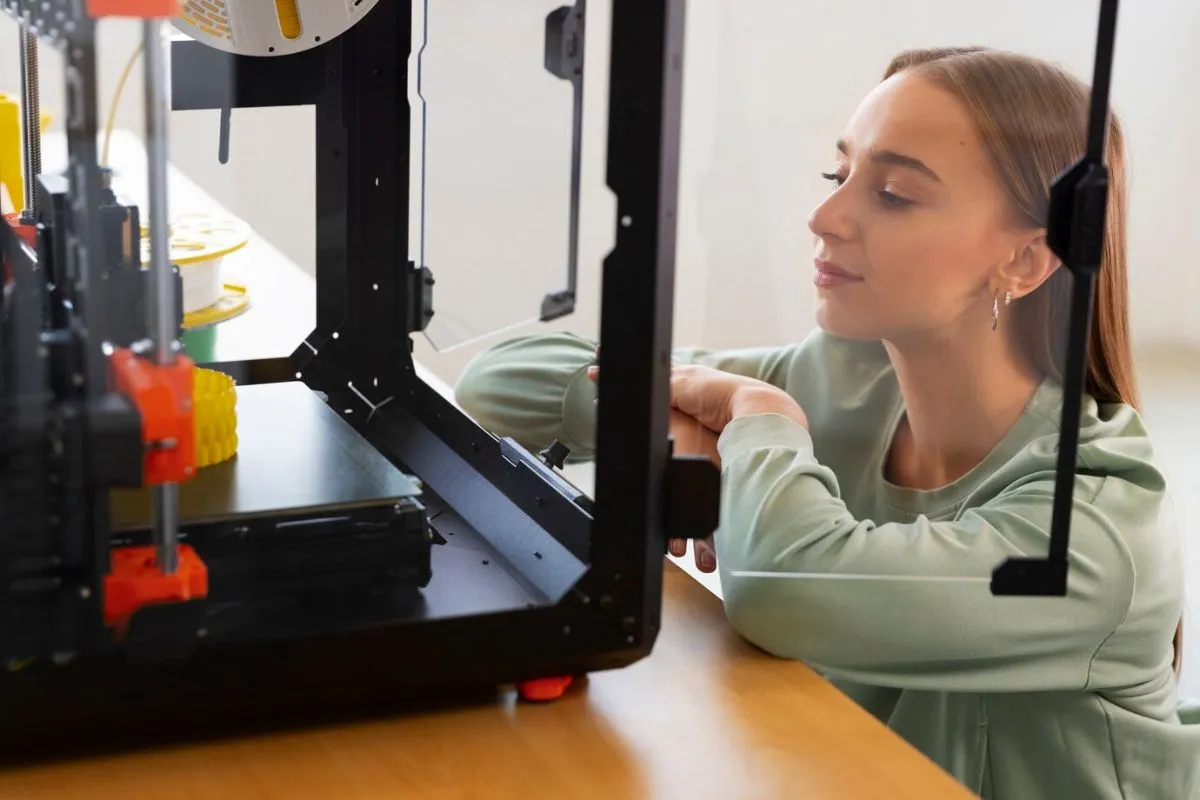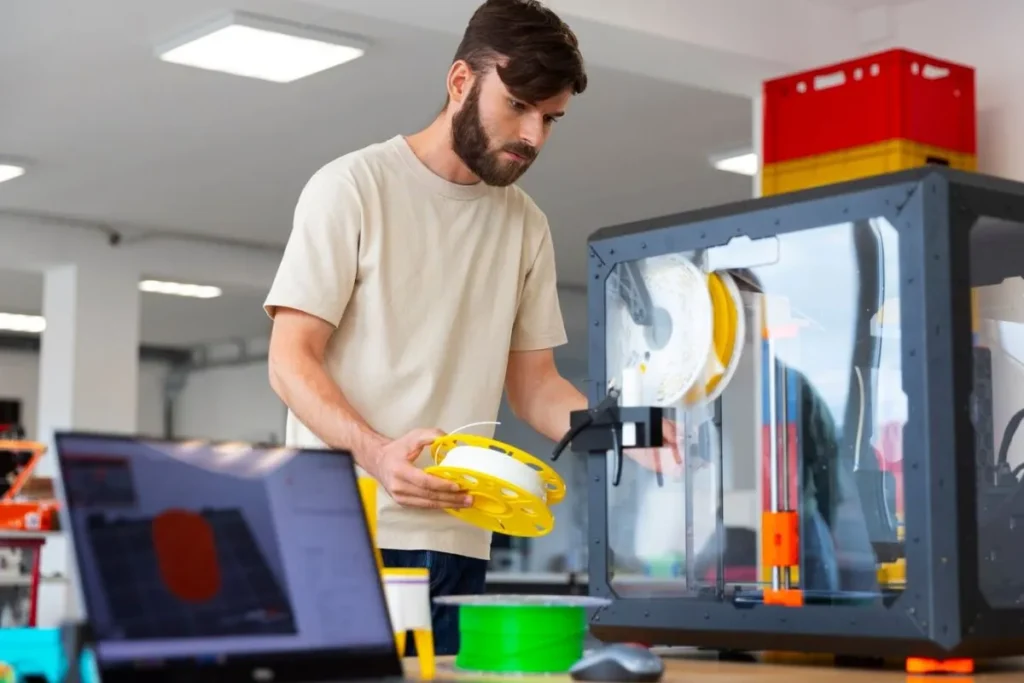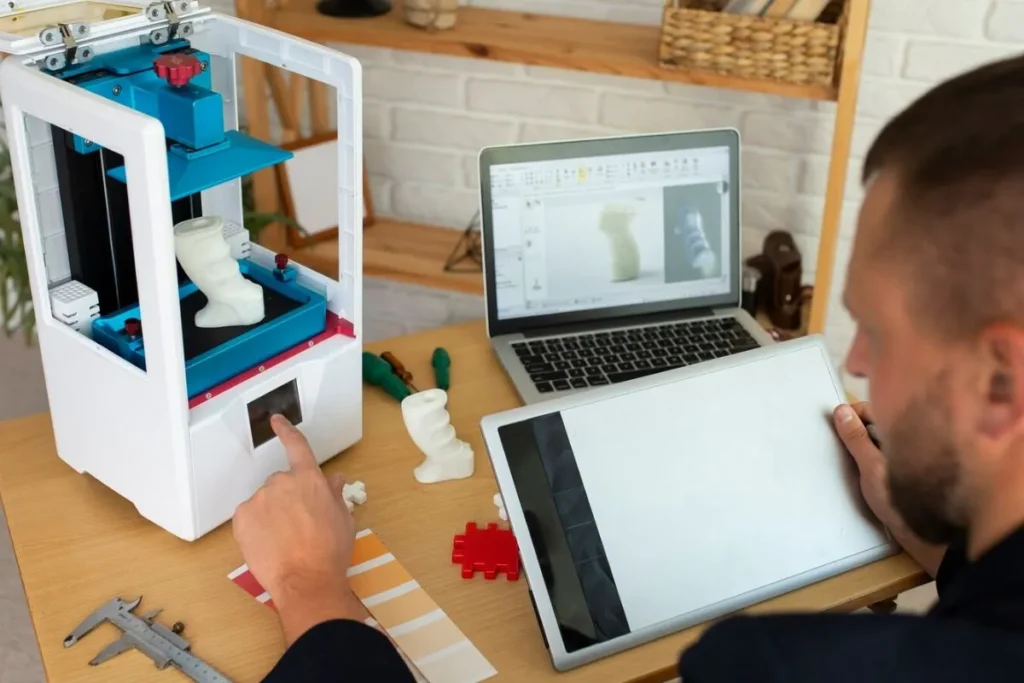Using 3D Printing to Teach Geometry Concepts is revolutionizing the educational landscape. This innovative technology enhances visualization.
Through hands-on learning, students grasp complex geometry more effectively. Let’s delve into methods and projects utilizing 3D printing in teaching geometry.
Why Use 3D Printing in Geometry Education?
3D printing fosters a deeper understanding of geometric shapes. It transforms abstract ideas into tangible objects. Students can visualize and physically manipulate complex geometries, enhancing their comprehension.
This approach caters to different learning styles. Visual and kinesthetic learners benefit immensely from this method. It engages students in hands-on activities that reinforce theoretical concepts.
Additionally, integrating 3D printing in education aligns with modern technological advancements. It prepares students for future careers in STEM fields. Exposure to cutting-edge technology inspires innovation and critical thinking skills.
Moreover, 3D printing encourages collaboration and creativity among students. They can work together on projects, sharing ideas and building teamwork skills essential for their future careers.
Methods of Using 3D Printing to Teach Geometry Concepts
Interactive Lessons
Creating interactive lessons with 3D printing captivates students’ attention. Educators can design custom 3D models of geometric shapes tailored to the curriculum.
This method allows students to manipulate these models. They can explore properties like surface area and volume, gaining a hands-on understanding.
Interactive lessons encourage active participation. This leads to better retention of geometric concepts, making abstract ideas more concrete and relatable.
Moreover, these lessons foster collaboration among students. Working with 3D models in groups enhances communication skills and teamwork.
Project-Based Learning
Incorporating project-based learning (PBL) with 3D printing fosters collaboration. Students work in groups to design and print geometric objects.
These projects can be tailored to cover specific geometry topics. Examples include polyhedra, tessellations, and symmetry.
PBL promotes problem-solving skills. It also enhances critical thinking and creativity.
Visualization Tools
Using 3D printing as a visualization tool offers clear insights into geometry. Teachers can print models that demonstrate complex concepts, making abstract ideas tangible.
For instance, 3D-printed cross-sections of shapes help students understand volumes and areas more easily. This hands-on approach aids in grasping difficult concepts faster.
Visualization tools bridge the gap between theoretical and practical learning. They enhance comprehension and retention, providing a multi-sensory learning experience. Integrating these tools in lessons fosters a more engaging and interactive classroom environment.
Innovative Projects Using 3D Printing to Teach Geometry Concepts
Geometric Shape Models
Designing and printing geometric shape models can be fun and educational. These models can include prisms, pyramids, cylinders, and spheres.
Students can label different parts of these shapes. This aids in understanding properties like edges, vertices, and faces.
Customized models cater to various geometry topics. They serve as excellent teaching aids.
Symmetry and Tessellation Projects
Exploring symmetry and tessellation through 3D printing is engaging. Students can design patterns that showcase reflectional and rotational symmetry.
Tessellation projects involve creating repeating geometric patterns. These projects highlight concepts like tiling and angles.
Such hands-on activities make abstract concepts more relatable.
Real-World Applications
Applying geometry to real-world problems is crucial. Projects involving architectural models or engineering designs are impactful.
Students can print 3D models of bridges, buildings, or mechanical parts. Analyzing these models integrates geometry with practical applications.
Such projects demonstrate the relevance of geometry in everyday life.
Advantages of Using 3D Printing in Teaching Geometry
Integrating 3D printing in geometry classes offers several advantages. These include enhanced understanding and increased engagement.
Enhanced Visualization
Tangible 3D models improve spatial reasoning. Students grasp complex concepts more easily.
Objects printed in 3D offer a 360-degree view. This fosters a comprehensive understanding of geometric shapes.
Hands-On Learning
3D printing promotes hands-on learning. Interactive models encourage active participation.
Students benefit from a practical approach. This method complements traditional teaching techniques.
Future-Ready Skills
Integrating technology in education prepares students for future careers. 3D printing skills are valuable in many fields.
Students gain proficiency in handling cutting-edge technology. This fosters STEM education and future readiness.
Challenges and Considerations
Resource Limitations
While 3D printing offers numerous benefits, it also has challenges. Schools may face resource limitations, including budget constraints.
3D printers and materials can be costly. Maintenance and technical support also add to expenses.
Technical Proficiency
Implementing 3D printing requires technical know-how. Educators need proper training to effectively use this technology.
Students must also develop skills to operate 3D printers. Integrating this technology needs time and practice.
Curriculum Integration
Integrating 3D printing into the existing curriculum can be challenging. Educators need to align projects with learning objectives, ensuring that they complement and enhance the curriculum rather than disrupt it.
Curriculum adjustments may be necessary to incorporate 3D printing effectively. This might involve revising lesson plans, incorporating new teaching materials, and allocating time for hands-on projects.
Effective integration requires planning and coordination among teachers, administrators, and support staff. Professional development and training can help educators feel confident in using 3D printing technology.
By overcoming these challenges, schools can unlock the full potential of 3D printing. This innovative approach can enrich the learning experience and better prepare students for future technological advancements.
Engaging the Future of Geometry Education
Using 3D Printing to Teach Geometry Concepts is transforming the way students learn. This innovative approach enhances visualization, fosters hands-on learning, and integrates technology into education. Despite challenges, the benefits are significant.
To leverage 3D printing effectively, educators must navigate resource limitations. Proper training and curriculum integration are crucial for success. As technology advances, 3D printing will play an increasingly important role in geometry education. It’s an exciting time to explore and implement these methods and projects.
Frequently Asked Questions
What are the benefits of using 3D printing in geometry education?
3D printing enhances visualization, encourages hands-on learning, and integrates technology into education, preparing students for future careers.
What types of projects can be done with 3D printing in geometry?
Projects can include geometric shape models, symmetry and tessellation patterns, and real-world applications like architectural models.
What are the challenges of integrating 3D printing in the classroom?
Challenges include resource limitations, technical proficiency requirements, and the need for curriculum adjustments.
How does 3D printing benefit visual and kinesthetic learners?
3D printing creates tangible models that cater to visual and kinesthetic learners, enhancing their understanding of complex concepts through interaction.
Is 3D printing cost-effective for schools?
While 3D printing can be costly initially, its long-term benefits in enhancing education and preparing students for future careers can justify the investment.



